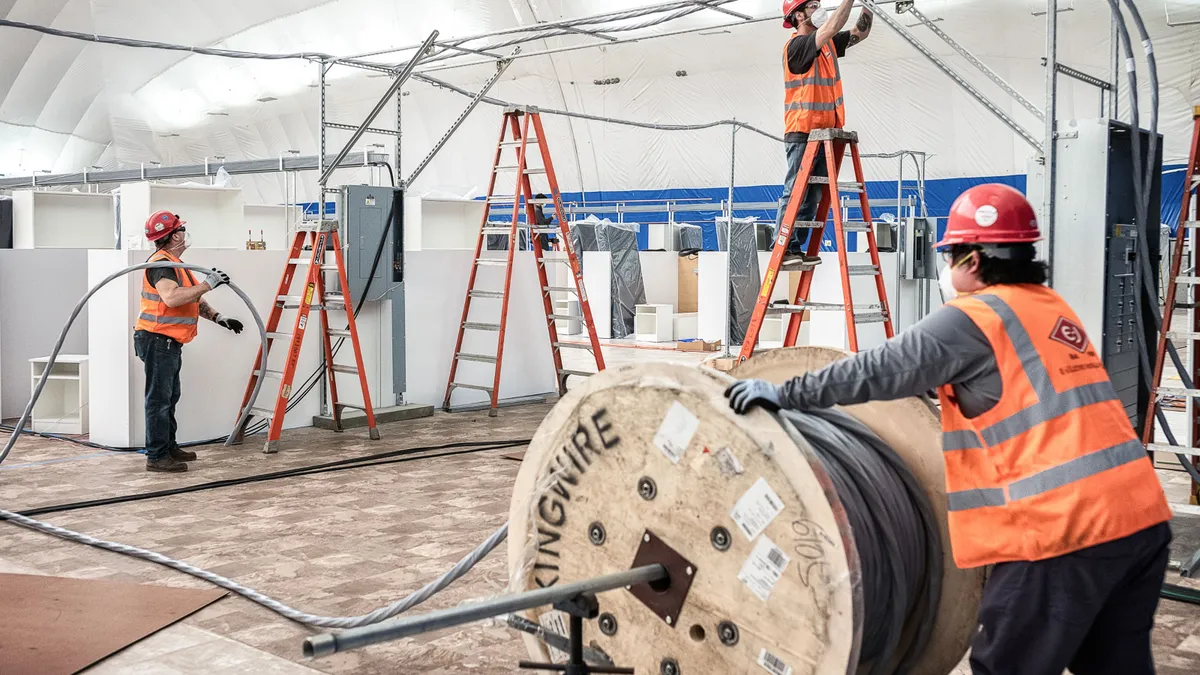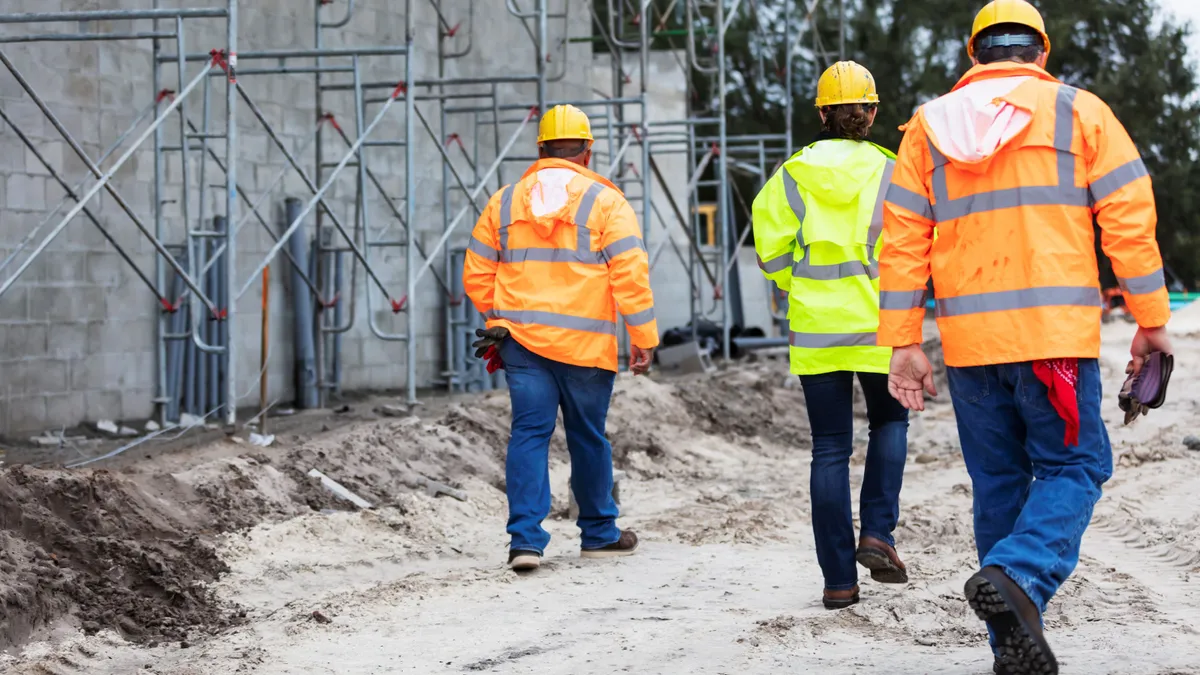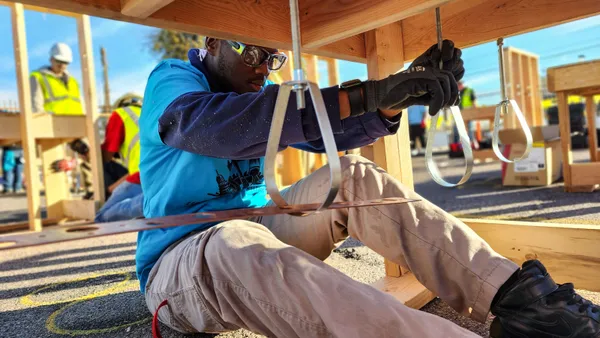The U.S. has invested heavily in registered apprenticeships in a range of industries and as a primary method of growing the construction workforce. But the number of workers those programs produce are far from what the industry needs, according to a new report.
In 2024, the federal government poured $244 million into expanding apprenticeship opportunities in growing industries such as construction, making it the largest federal investment in them to date, according to the report released by Rand Corp. last month. Despite the historic level of funding, Rand found that RAPs won’t help provide as much relief in the tight labor market as construction needs.
“In order to meet that demand for construction workers, you need to attract about half of high school graduates in the U.S. and you need to do it like ASAP, which is an unrealistic recruitment plan,” said Marwa AlFakhri, associate policy researcher at Rand and one of the report’s authors.
About three in five enrollees complete their apprenticeship programs, the Santa Monica, California-based nonprofit research group found. That is on par with other multiyear forms of postsecondary education, but still means many workers don’t finish their training. The confounding part is that apprentices more easily earn money than traditional students while they gain their certification.
AlFakhri said there’s a lot that’s unclear about why more young people don’t pursue construction and whether or not they stay in the industry after an apprenticeship ends. Data only indicate if trainees complete their training or not, not if they remain in the industry. That lack of clarity is part of the problem, the report said.
Supply and demand
Metrics from the Bureau of Labor Statistics and Associated Builders and Contractors indicate construction needs around half a million workers, AlFakhri said, meaning the demand for workers is clear.
“The supply of workers is a little bit trickier to think about because we're thinking about people coming from different streams, right?” she said.
Those already working in construction may be able to move around and fill roles, she said, but a relatively low unemployment rate in the industry indicates most construction workers already have work.
That leaves the option of new entrants to the market.
The Rand report estimated that in 2024, immigration might have produced 85,000 new entrants to the workforce, community and technical colleges about 28,000 and RAPs another 33,500. That’s well short of the industry’s needs.
The largest bucket to focus on for potential growth is high school graduates, who can often find the fastest route to a career in the earn-as-you-learn model of an apprenticeship.
The good news is that the number of RAPs have grown in the last decade, the report found, increasing nearly 60% from 2014 to 2023. Nonetheless, programs are small. In 2023, about 33% of programs had only one active construction apprentice.
Proposed update
About half of all apprenticeships in the U.S. are registered with the U.S. Department of Labor, per Rand. RAPs are either independently sponsored by employers, or jointly by employers and labor organizations such as unions or schools. Sponsors can register their programs with the Labor Department, which then provides oversight to ensure quality, protect apprentices’ interests and verify that programs meet guidelines.
On Nov. 17, the Labor Department withdrew an embattled rule designed to update the existing RAP program. The proposed rule sought to bolster labor standards and protections within the RAPs and provide improvements for historically underrepresented groups, such as women and people of color.
Republican opponents pushed back on the rule’s time-based model, which would require enrollees to complete hours on the job as well as in the classroom, eliminating the option for apprentices to complete their programs by proven competency alone.
Big picture
To improve nationwide recruitment, AlFakhri said the whole industry would need to focus harder on outreach and education, while also researching why apprentices drop out of their programs,, AlFakhri said.
“This is a system problem that needs to be addressed by all stakeholders involved in the system,” AlFakhri said.
John Mielke, the senior director of apprenticeship for Associated Builders and Contractors, said the paper indicates the industry’s need for more pathways to the trades.
“The Rand report on construction apprenticeships is further validation of ABC’s long-held position that the construction industry needs an all-of-the-above approach to workforce development to build the quality housing, manufacturing and infrastructure this country needs over the next decade,” Mielke told Construction Dive. “While government-registered apprenticeship programs are a critical strategy, they alone will be insufficient to meet the industry’s workforce needs.”
Mielke noted the CHIPS Act and other funding measures increase demand for registered apprenticeships, but don’t necessarily expand the development pipeline. He suggested recognizing other pathways, such as just-in-time task training or other craft development programs.
A major conclusion from the report, AlFakhri said, is that more information is needed.
“I think the big takeaway, and again, this is not for a single contractor to think about, but for the entire system to sort of support, is we need a lot more work to understand why apprenticeship programs work and don't work,” AlFakhri said.






















